Disclosure: Meeple Mountain received a free copy of this product in exchange for an honest, unbiased review. This review is not intended to be an endorsement.
Sorcerer City is a city in perpetual flux. Each year the city’s architects, a group of powerful wizards, use their powers to rebuild the city, district by district, to accommodate the city’s expansion and growth. You are one of these wizards.
This is the backdrop for Sorcerer City.
Overview
Sorcerer City combines tile laying, deck building, and puzzle solving elements with a healthy dose of real time strategy. The game is played over a series of rounds (called “years”). At the beginning of each year the players will shuffle their tile decks and then, over a two-minute period, draw and place those tiles into their city district following specific placement guidelines. After each year players will have the opportunity to shop for new tiles to add to their tile decks as well as earn bonuses for meeting various objectives.
As your city district grows, so too does your wealth, power, and prestige. The chaos caused by the city’s upheaval attracts some unsavory monster types, so you’ll need to deal with these threats as they arise. At the end of each year your progress will be evaluated. After 5 years, if you have earned more prestige than all of the other architects, you will be awarded the title of Head Wizard and win the game.
This is a very high level overview. If you’d like to learn how to play Sorcerer City, continue reading. Otherwise, feel free to skip ahead to the Thoughts section.
Setup
First, each player is given an Annual Progress (AP) track, 4 AP markers (which are placed on the 0 space of each of the different rows on the AP track), 1 of each color of AP tokens, 1 set of Magic Transformation cards, and 1 set of Starting tiles. Each set of Starting tiles is exactly the same as each other set with their sole difference being the set symbol printed on the tiles. These symbols help to keep the sets from getting mixed together by mistake during cleanup. These tiles should be shuffled and placed face down in front of the players.
Next the shared game area is set up. The Market board is set out, the 5 Vendor tiles decks are shuffled and placed in numeric order above the board, and 3 tiles from each deck are drawn and placed in columns beneath Years 1, 2, 3, and 4. The Rainbow tiles are set beneath Year 5.
The Influence Rewards board is set beneath this. The Influence Reward deck is shuffled and 1 card is placed face up in each column. The remaining Influence Reward cards are returned to the box and will not be used in the current game.
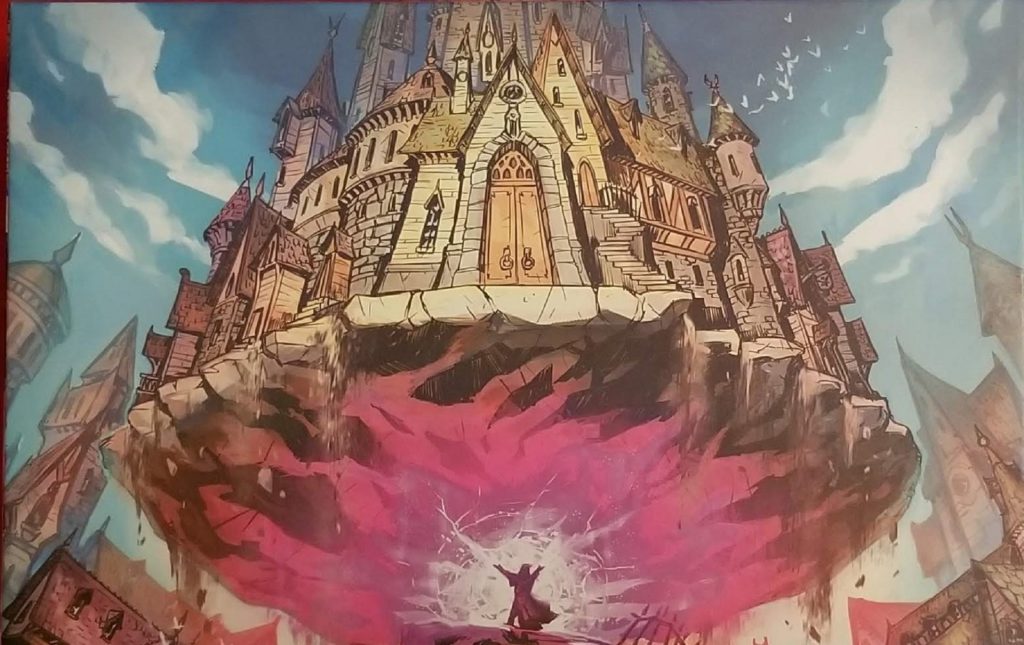
Beneath this is the Monsters area. The Tier 1 Monster Randomizer cards are shuffled and one is selected at random. The matching tiles are placed beneath the first column of the Influence Reward board beneath the card. This same process is followed for the second, third, and fourth columns such that columns 1 and 2 are Tier 1 monsters and columns 3 and 4 are Tier 2. The Monster Randomizer cards are placed beneath their corresponding pile of tiles.
All of the Prestige tokens are set off to the side within easy reach of everyone. Then a starting player is determined, handed the sand timer, and you are ready to begin.
Although the setup for a game of Sorcerer City is rather involved, it is made much simpler by the plastic insert that is included in each copy of the game. The insert has multiple bays that are all labeled to make organizing the tiles much easier. However, the labels are imprinted into the plastic beneath the tiles, so it’s much more effective when putting the game away than it is when setting up the game.
What’s in a District?
Each year is divided into several phases: the preparation, build, score, influence and buy, prestige, and cleanup phases. In the preparation phase, the players collect all of their tiles and shuffle them together into a face down pile. In the build phase the start player begins the timer and the players simultaneously draw tiles from their tile decks and place them into their district following one simple rule: with the exception of the first tile, each tile must be placed orthogonally adjacent to an existing tile.
But there’s more to it than just placing tiles.
Color and Goals
Each district tile features 1 to 4 different colors (either red, green, yellow, or purple) which correspond to specific resources: yellow = money, red = influence, green = prestige, and purple = wild magic. While it is not required to connect like color to like color, it is beneficial to do so because some tiles contain goals (represented by shields with iconography on them) and, generally, the more of a connected color encapsulating that goal, the better the outcome will be. In fact, in most cases, any colors that do not encapsulate a goal won’t earn the player anything at all. There is one type of goal that only cares about how many other goal tiles surround it; that’s the only exception to the rule. To help clarify that, here are the different goal types:
Group goal: If any of the tiles form a color cluster (a color spread across several tiles that results in a connected block of that color), count up the number of tiles and score that amount of whichever color resource is represented.
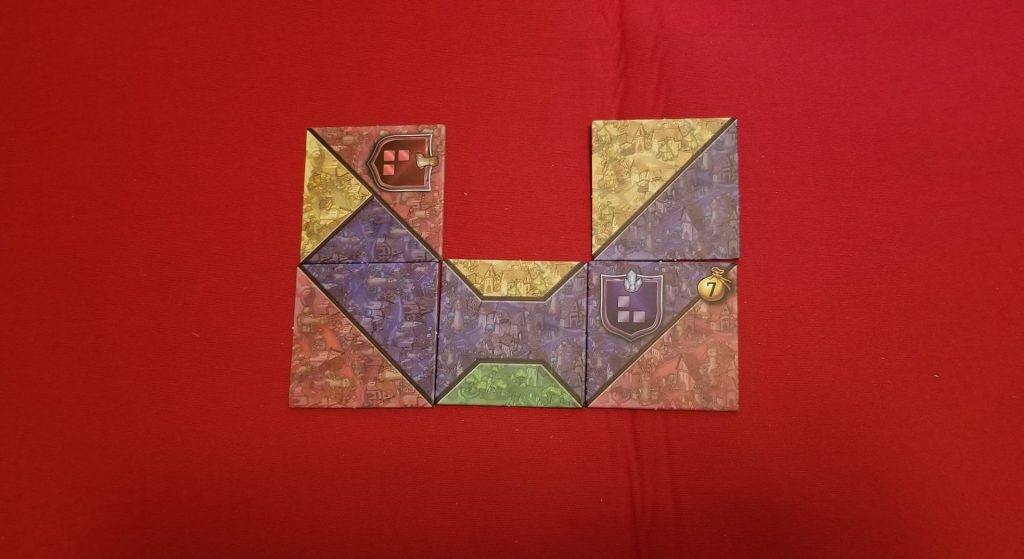
Line goal: Regardless of how many same color tiles exist in the cluster containing this goal tile, the player will only score for the ones connected in a straight line.

Shield goal: This goal scores for every shield icon in its immediate vicinity, itself plus the eight tiles surrounding it (regardless of their colors). There is one caveat, though. In order to score, the shield goal tile must have at least 2 neighboring tiles with shield icons on them.

Monsters
Nothing ruins some sound city planning like the appearance of a monster. Monsters are the proverbial wrench in the works. At the end of each year, each player will be adding a monster to their tile deck. As these monsters appear during the build phase, they will add a little bit of chaos to the player’s turn. Every monster has its own sinister ability that will need to be dealt with in a quick and timely manner lest the player lose valuable time. Here are a few examples of some of the monsters you might encounter during a game of Sorcerer City:
Dark Mage: During district scoring, any goal tiles bordering the Dark Mage are treated as if they do not exist.
Demon: When the Demon is drawn, the player must immediately discard 2 tiles with red on them from their district. These tiles are no longer usable during the current year but will be shuffled back into the tile deck during the next one.
Goblin: Functionally the same as a Demon, but it removes yellow tiles instead.
There are a total of 14 monsters in the game (7 Tier 1 and 7 Tier 2) which presents a measure of variability from one game to the next.
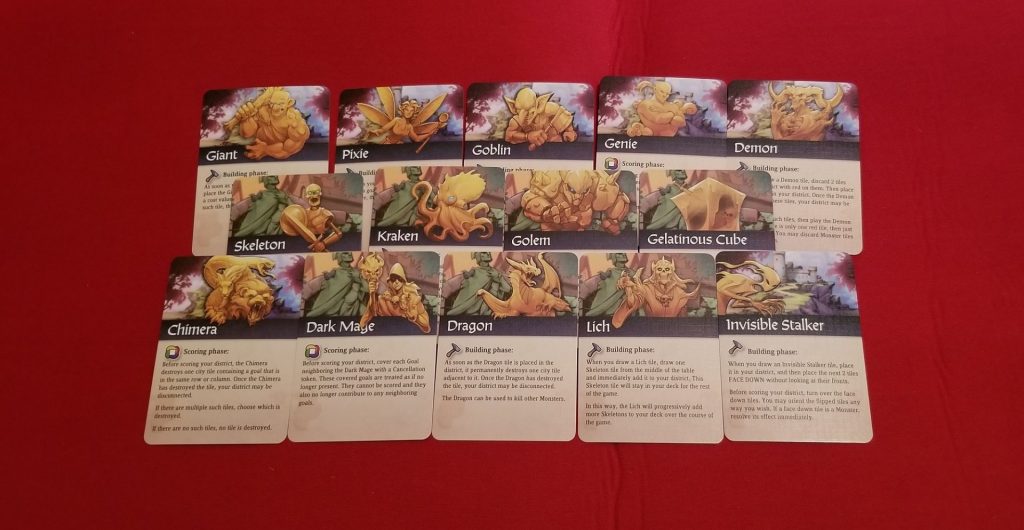
Raking in the Resources
At the end of each year, a scoring is performed. Each player will calculate how many points they are going to score for each of the different colors and then mark those acquisitions accordingly on their AP track. Each track ends in 30, so if a player should exceed this amount, they mark it using the appropriate AP token. However, a player may never exceed 60 points in a single category in any given year. Any gains over 60 are lost.
During setup each player received 3 Magic Transformation cards. Each card corresponds to one of the non-wild magic resources. Once everyone has calculated their income, each player that accumulated any wild magic during the year will secretly select one of these cards and place it face down in front of them. Once each participating player has selected a card, the cards are flipped face up and then the players’ wild magic is converted into the resource matching whichever Magic Transformation card they selected. Once again, no player may exceed 60 points in any category.
The resources you have received in a given year become important during the next phase, the influence and buy phase.
Being an Influencer
A player’s influence has two main effects: it determines their turn order during this phase and it also determines which Influence Reward (if any) they will receive. The person with the highest influence at the end of the year earns the Influence Reward for that year as well as the Prestige (read: victory point) Bonus shown for that year. The person with the second highest must choose between the two. In a 3 player game, the third place player receives whichever reward the second player rejected. Otherwise they receive their choice of either 5 money or an extra buy. This is also the same reward for fourth place.
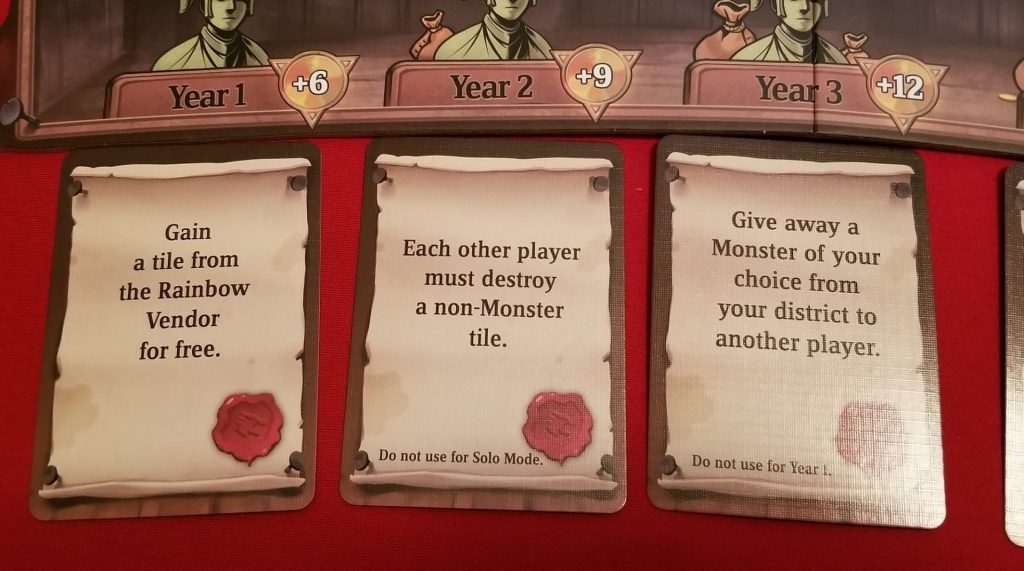
Going Shopping
Once the person with the highest influence has received their Influence Reward then they also have the opportunity to buy up to 2 tiles from the Market by paying the cost printed on each tile. As soon as a tile is removed, it is immediately replaced with another tile from the appropriate deck. Some tile effects or triggered bonuses may give players the ability to buy more than 2 tiles or even receive tiles for free! The purchased tiles are added to the player’s discard pile and will appear in future years.
Once that player has finished making their selections, the other players will go shopping in order of total influence.
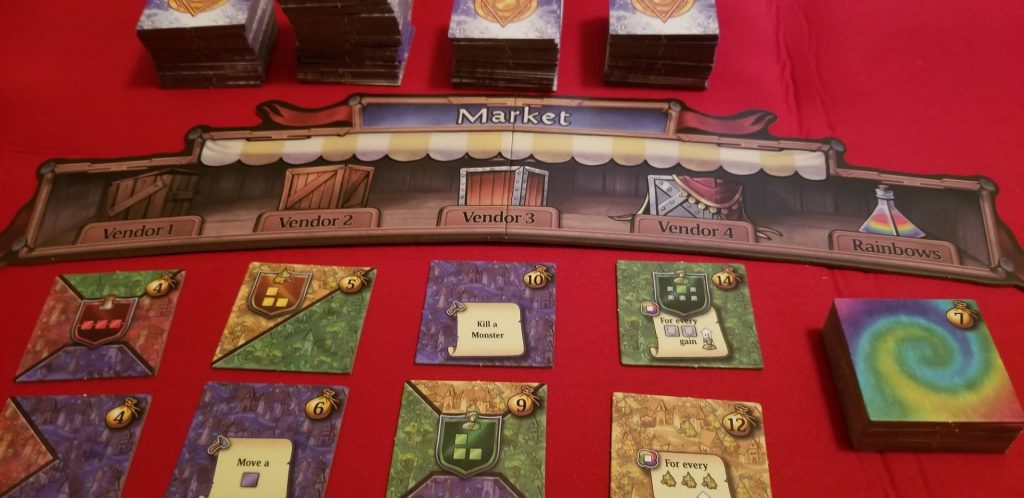
Prestigery
After each player has finished shopping, they gain an amount of prestige equal to the prestige level on their Annual Progress tracks. The person that earned the least prestige will receive a free market tile drawn from one of the vendor decks. The vendor deck that this tile is drawn from depends on which year was just completed.
After rewarding prestige, the current year’s Monster deck is shuffled and each player is randomly given one of the tiles which they add to their discard pile. Then each player gathers up all of the tiles in their district and shuffles them with the tiles in their discard pile to form a new deck, the timer is passed to the next player in clockwise order, and a new year begins unless, of course, this was the end of Year 5.
At the end of the fifth year, there is no Influence Reward and there is no second, third, or fourth place. The person with the most influence receives the Prestige Bonus. No tiles are bought and no new monsters are introduced. Everything else is scored as normal and the person with the most accumulated prestige over the course of the game wins.
Thoughts
I can clearly recall when I was in elementary school the time my teacher was teaching us about the passage of time. To demonstrate just how long a minute was, my teacher had us all sit there in total silence for a full 60 seconds. At 8 or 9 years old, this seemed interminable. I thought I would die of boredom before that minute ever ended. If you’d asked me to sit still for double that amount of time, I’m sure I would have had some choice words for you.
That was then – a time before I had ever played Sorcerer City. Now I know better. Two minutes is fleeting. It’s either that or this sand timer, my watch, your watch, and the Sorcerer City timer app (available through your favorite app store!) are broken because there’s no way that was 2 minutes. I mean, I barely got any tiles out!
Sorcerer City is a slow burn. The first year, things go pretty smoothly. “Two minutes?” you scoff. “That’s about 1 minute too long if you ask me. I was done placing tiles ages ago.” But as each year goes by and new tiles and monsters are introduced everything changes. Before you know it, you’ve moved from a lackadaisical, “sipping mai tais on the beach” experience to a high pressure game that’ll have you standing up out of your chair in a frenetic panic.
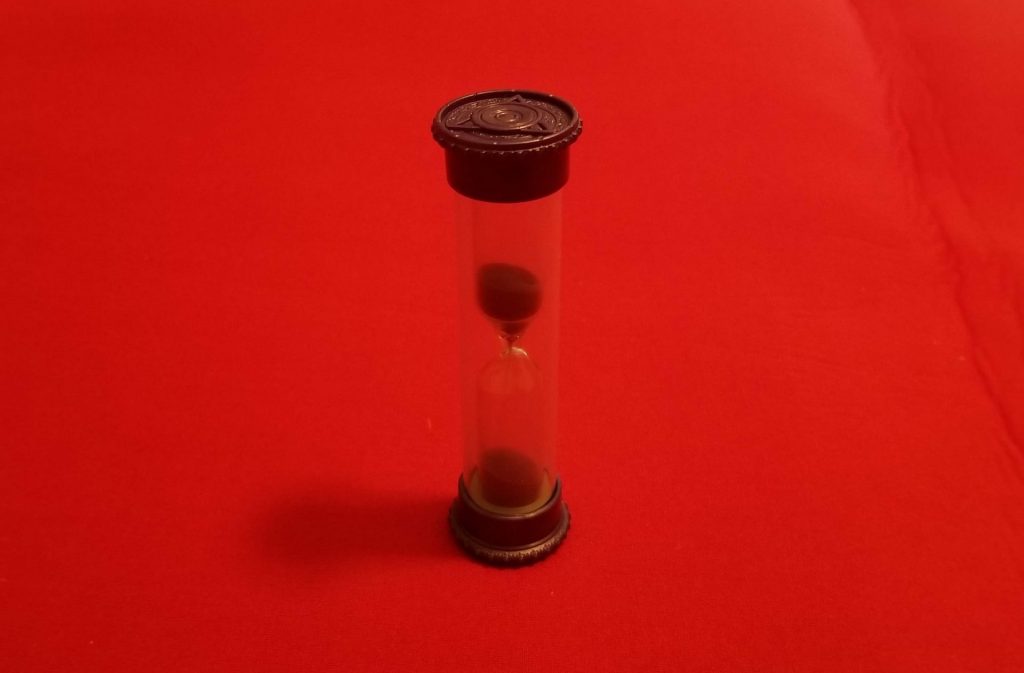
This is simultaneously Sorcerer City’s biggest draw and its biggest turn off. If you’re a person that doesn’t handle pressure well, then Sorcerer City is definitely not the game for you because, I am not going to downplay it, this game can get pretty intense. As your deck of tiles gets bigger and bigger you can feel the crushing weight of that sand timer pushing down on you. Managing to get all of your tiles played before times runs out feels amazing, but it can feel pretty soul crushing when the reverse is true. The good thing, though, is that if you find that 2 minutes is just too much pressure, you can just use some other timer set to give you extra time.
It is also worth noting that the citizens of Sorcerer City put up with far more than any person should ever be asked to put up with. I mean, can you imagine how obnoxious it would be to have your home uprooted and dropped into some random location each year? One day you’re just a few minutes away from all of the essentials like Taco Bell, close enough to your job that you can grab a nap on your lunch break, and your kids are going to some of the best schools in the district. The next you’re living in the seedy part of town with monsters banging down your front door. What a nightmare! Why anyone continues living in Sorcerer City is beyond me.
If you’re able to look past that thematic issue and are able to operate under pressure, though, you’ll find a very enjoyable game. Sorcerer City will test your mettle and decision making skills at every turn. From where to place your tiles to what to spend your raw magic on to what to buy, your choices are never easy. There are also a lot of memorable moments that occur when someone across the table from you audibly groans as an untimely monster draw throws all of their plans into a tailspin or someone else cheers as they start off their turn by drawing all of their monsters right off the bat effectively negating all of their deleterious effects.
Sorcerer City is a constant fight for dominance coupled with a struggle for survival. There’s never a runaway leader problem because a player’s good fortune is never guaranteed to last. The randomness of the tile draws makes certain of that. While a healthy dose of unpredictability is a major turn off in most games, it’s a welcome sight in Sorcerer City. Never knowing what’s going to turn up next keeps you invested as you hope for the best while planning for the worst.
While I’m generally not a fan of high-pressure, luck based games, I make an exception for this one. There’s just something about Sorcerer City that keeps me coming back for more. Maybe it’s the anticipation of what’s going to happen when I flip over the next tile. Maybe it’s the adrenaline rush I get from racing the clock. Perhaps it’s the deck building or the tile laying; both game mechanics which I thoroughly enjoy. I can’t put my finger on it exactly. There is one thing for sure, though. It’s not because of the real estate or property values. Because, come on, seriously?


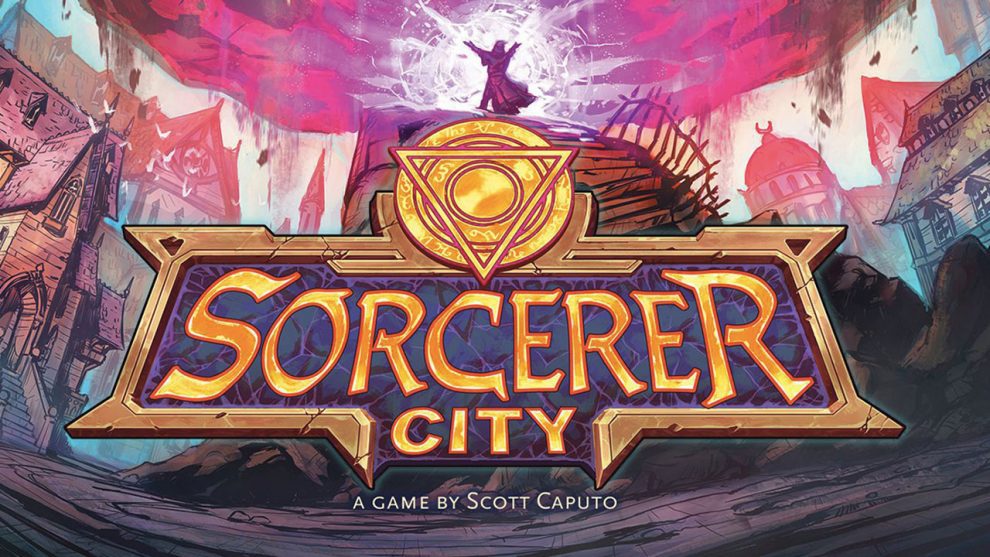

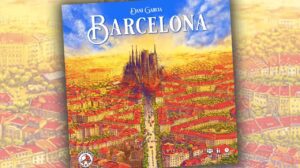
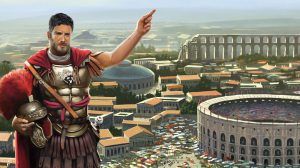






Thanks for a great review! One of my favorite games is INFINITE CITY, and so I can see some things in this one that are certainly enticing. 🙂